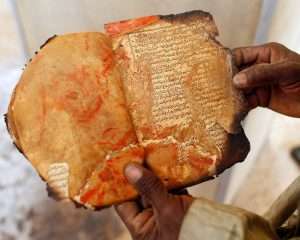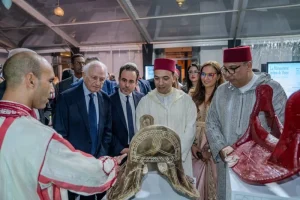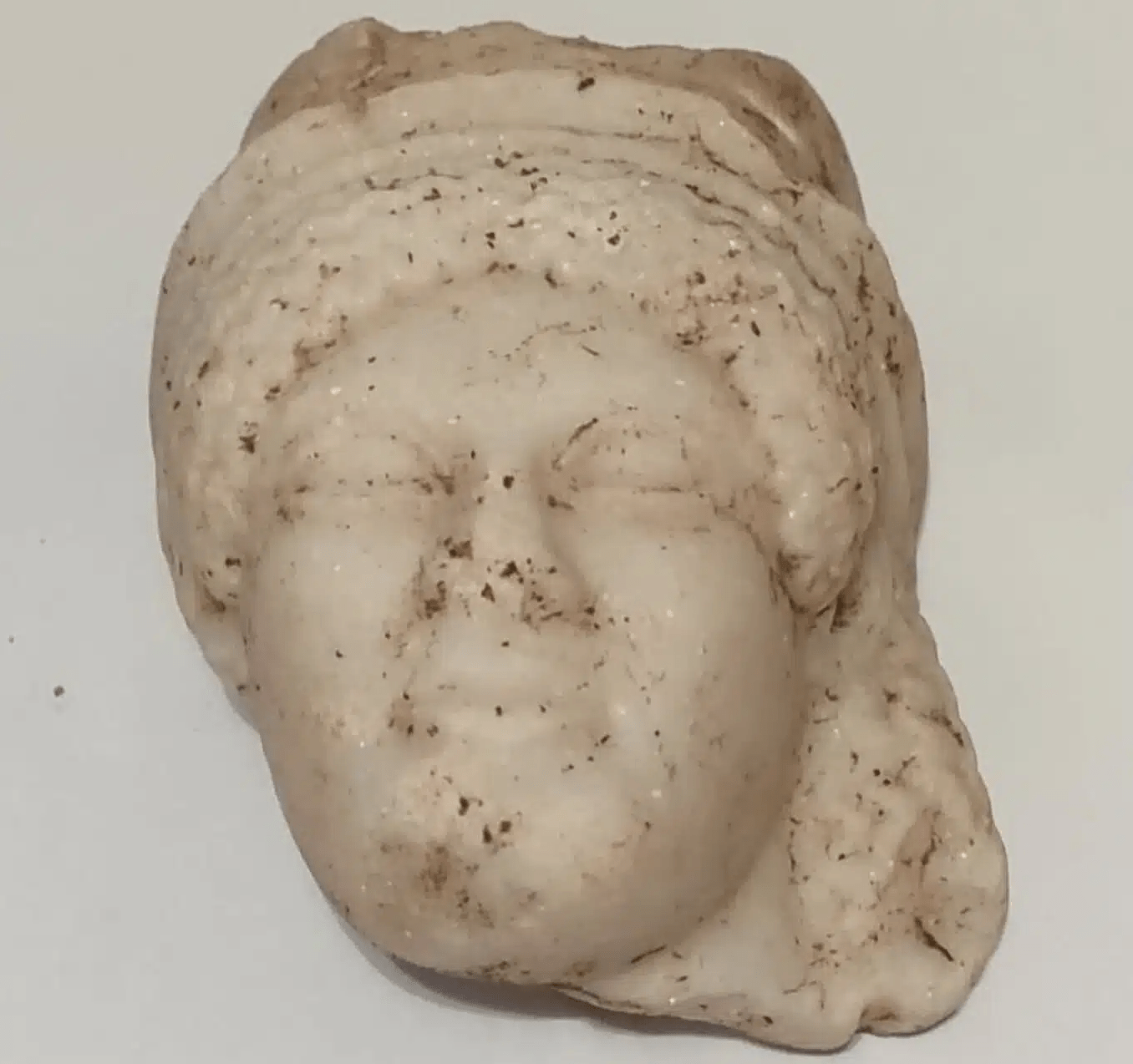Legacy of Mohamed Bennani: Conversations with Colors

With the departure of artist Mohamed Bennani, modern painting in Morocco has lost one of its most important daughters and founders. The legacy that Bennani has left behind is as rich as the colours in his paintings
Bennani belongs to the generation that appeared in the seventies of the twentieth century, loaded with dreams of change based on the openness of the local identity to international references. The emergence of that generation had caused a great shift in the ways of artistic vision.
In 2005, Bennani held his twenty-fifth exhibition. In that exhibition there was a side that brought him together with the French photographer Jean-Claude Lafitte. As Lafitte photographed the paintings of the Moroccan artist and introduced artistic touches to them through the computer, and then created digital copies of them. From that step, it became clear that the painter, who appeared experimental, adventurous and rebellious in the seventies of the twentieth century in Tangier, was still residing in his visual adventure.
Benani’s passion for materials prompted him to use dirt, sand and stone to create the surfaces of his paintings. He was like the father of all the artistic experiments that were based on the relationship between matter and surface after him.
For him, the surface was not a field in which shapes moved and clashed, harmonious and contradictory. Rather, it was part of that struggle that testified to the vitality of the painting.
And from his connection with the materials, he invented his theory of the relationship of the place with the colors that dominate the paintings. For example, blue and white prevail in the drawings of the painters of northern Morocco, and he is one of them, of course.
In 2009, an honorary exhibition was held for him in Kenitra, on the occasion of his nomination by the Moroccan monarch, King Mohammed VI, with the Medal of National Reward, rank of officer.

In that exhibition, Bennani talked about his relationship with colors, saying, “I deal with colors as characters. A painting for me is like a movie for which I choose colors that play a starring role, and others that play secondary roles, so my relationship with each other is very intimate. The brown color I love very much, and the same applies to black.” White and blue, and I detest other colors that I do not imagine in one of my paintings, such as pink, for example, and there are colors that sometimes rebel and impose themselves in the painting.
Mohamed Bennani was born in 1943 in Tetouan. He studied at Al-Qarawiyyin University in Fez and held his first exhibition in Tangiers. After that, he won a scholarship to the Higher Institute of Fine Arts in Paris in 1962.
Bennani held thirty-five personal exhibitions inside and outside Morocco. In a large part, he revealed his fondness for literature, especially poetry. His joint book with novelist Taher Ben Jelloun in 1992 was the fruit of that passion. In the exhibition “My Autumn Friend” in 2005, Benani painted his paintings inspired by the poems of the Moroccan poet Aisha Al-Basri.
The years he spent in al-Qarawiyyin studying theology had the effect of immersing him in contemplating the Arabic letter and its visual impact. Therefore, he sought inspiration from it, and through it he went to abstraction as a vital field for spiritual contemplation.
Bennani’s passion for materials had given him the imagination of these materials to replace the dyes used by painters. He used sand as if it were oil, dirt as if it were acrylic, and stone as if it were liquid ink.
This is a blessing that Moroccan painters will inherit after him. “In painting, I do everything,” says Bennani. I play. I have an account liquidation if I have a problem with the board. I laugh with her. I play with her. As if I am telling the cloth what happened to me.”
We have to believe that this is his biography.
These are the keys to understanding a mysterious artistic experience. An experience described by some as easy and abstaining. Bennani’s paintings are loved because they are close to emotion. At first glance they might be said to be sentimental paintings, but they are not. They are contemplative paintings that encourage the painter to play as if he were a magician with joyful fingers.
He laughs because the world around him is still fresh. He paints the sea as he knew it and as he wished it to be. He had no choice but to be a happy painter. That is why others loved him and were influenced by him, so he became a teacher out of nowhere. A landmark for generations, some of whose members will think that he drew his references from a distant culture.
His game with drawing and life
What was not discovered from Muhammad Benani more than what was learned from him. That is the secret of every true artist. Bennani was an abstract artist, but in reality he was a lover of Moroccan folk life, captivated by the sounds and smells of its markets, whose revelations he sought to portray. The man who lived there was him. He was not a keeper of a deposit. He was more like a guest. How beautiful is the painter when he is just a light guest. All of Banani’s vocabulary is ready for imitation. But she wouldn’t be the same without him.
Bennani says, “I talk to colors all the time, praising blue when I like it, kissing brown when I like it, and cursing yellow when it makes me angry. They are materials that carry a spirit and a language through which I express what I want.”
Such is his game with life that he decided to traverse through colours. It was in his materials that he decided to be part of his destiny and the fate of his paintings. He delighted in playing with the vocabulary of painting as if he were addressing the causes of his life’s misery. So Bennani was a difficult painter. Viewers loved his paintings because they pleased them, but contemplating them would lead the game of life to its torment.

The most influential artist
Muhammad Benani appeared late to the generation of the sixties (Farid Belkahia, Muhammad al-Malehi, Muhammad Shabaa), but he soon belonged to them with the strength of his influence, the privacy of his identity, and his imagination open to international heritage and references, so it became as if he was the son of the rebellious movement that emerged in the sixties. He is the son of the aesthetic school of Tetouan. It would be difficult to see him as the elusive part of that school except in the context of the effects his experience had on other artists who were not familiar with the Tetouan school.
Mohamed Bennani’s presence in Moroccan artistic modernity will always be confirmed by the works of the artists who were influenced by him. This can be recognized by looking at the Moroccan art scene. Perhaps Bennani is the artist who left the most impact on others. Others will see their paintings in his mirror. Perhaps his absence will be an occasion to do so, as he has not competed with anyone in his life. His art was the result of his experience in life, as in the way of looking at an art that ventures into opening up its local vocabulary to a global climate that may blow it at any moment. Whoever contemplates Bennani’s paintings must be overwhelmed by a contemplative mood soaked with emotion.
alarab.co.uk
Want to chase the pulse of North Africa?
Subscribe to receive our FREE weekly PDF magazine














